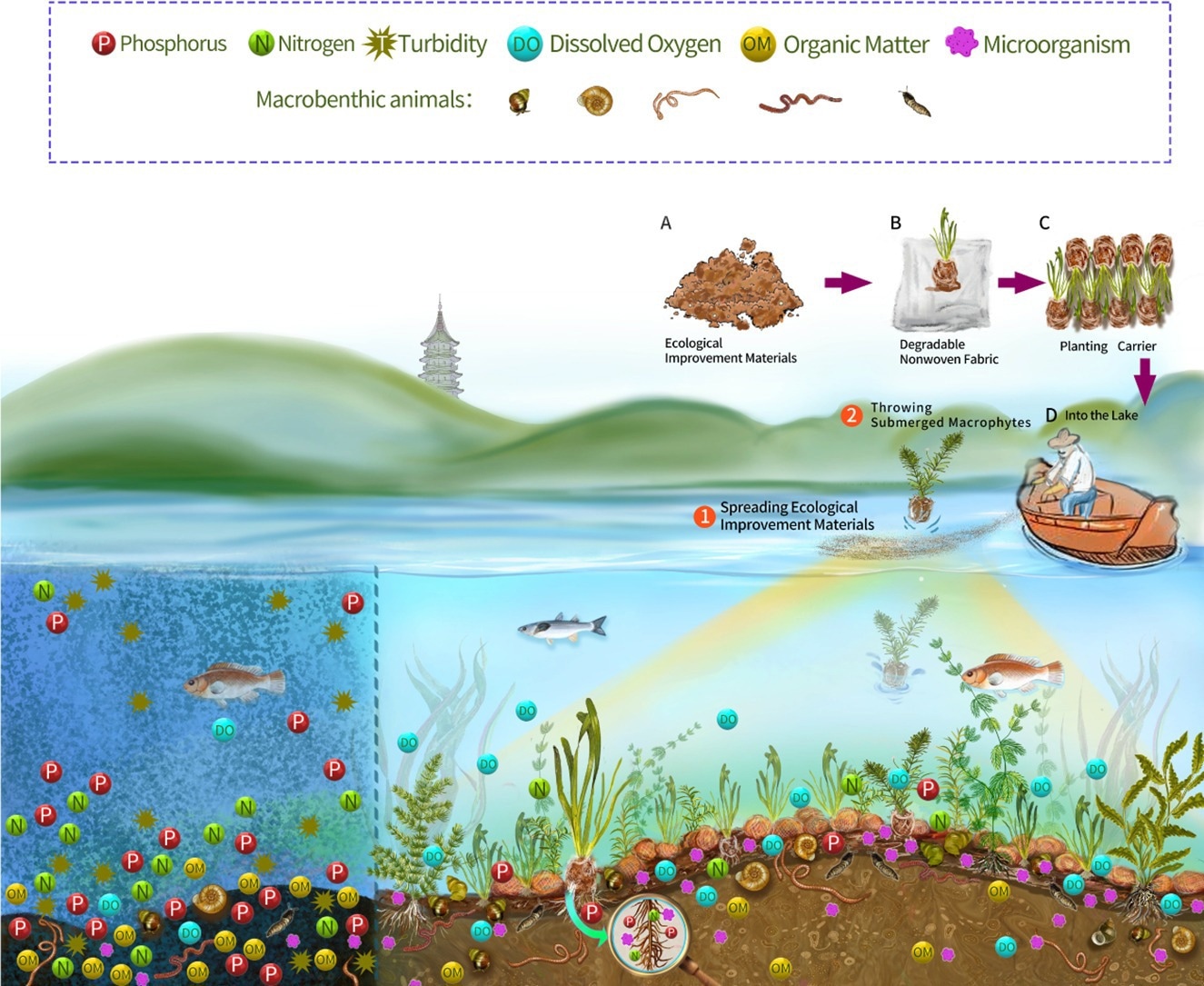West Lake, a normally small and eutrophic lake that is plagued by “incense ashes sediment,” is situated southwest of Hangzhou city and was inscribed as a UNESCO World Heritage site in 2011.
 Sediment Improvement and Submerged Plant Restoration project schematic diagram. Image Credit: Institute of Hydrobiology
Sediment Improvement and Submerged Plant Restoration project schematic diagram. Image Credit: Institute of Hydrobiology
The West Lake’s bottom layers of soft, floatable sediment are rich in organic matter, phosphate, and nitrogen nutrients. They are often called “incense ash sediment” because they resemble incense ash, which makes it difficult for submerged macrophytes to colonize and spread. It is a scientific and technical task to devise a sediment and ecological restoration strategy for the “incense ashes sediment” of heavily eutrophicated urban lakes.
The restoration project on West Lake that was carried out by a research team under the direction of Professor Zhenbin Wu from the Institute of Hydrobiology (IHB) of the Chinese Academy of Sciences enhanced sediment conditions, aided the expansion of submerged macrophytes, and accelerated the restoration and reconstruction of the lake ecosystem. Science of the Total Environment published this study.
The objective of the ecological restoration project is to enhance the sediment and revive submerged vegetation. Over six years, the project’s long-term consequences will be examined.
To enhance the sediment state, the researchers created ecological improvement materials and used them. Their research revealed that the materials might prevent sediment disturbance, absorb nutrients from the sediment, reduce sediment organic matter (OM), and enhance the colonization and propagation of submerged macrophytes.
The sediment total phosphorus (TP) decreased from 2.94 mg/g in 2015 to 1.33 mg/g in 2020, and the sediment organic matter decreased from 27.44% in 2015 to 8.08% in 2020. Furthermore, the ecological restoration project successfully restored the submerged macrophytes in the lake.”
Yi Zhang, Professor, Institute of Hydrobiology, Chinese Academy of Sciences
In addition, the researchers looked at how the ecological restoration effort influenced the richness of the benthic macroinvertebrate and sediment microbial communities. According to the findings, the ecological restoration project may raise the benthic community’s Margalef and Simpson indices from 3.06 and 0.41 to 4.76 and 0.62, accordingly.
According to this study, this ecological restoration technique could be used to control shallow eutrophic lakes and slow-moving waterways over the long term, particularly for specific sediments with significant pollutants that make it difficult for submerged plants to flourish.
Source:
Journal reference:
Liu, Z., et al. (2022) Long-term study of ecological restoration in a typical shallow urban lake. Science of the Total Environment. doi.org/10.1016/j.scitotenv.2022.157505.